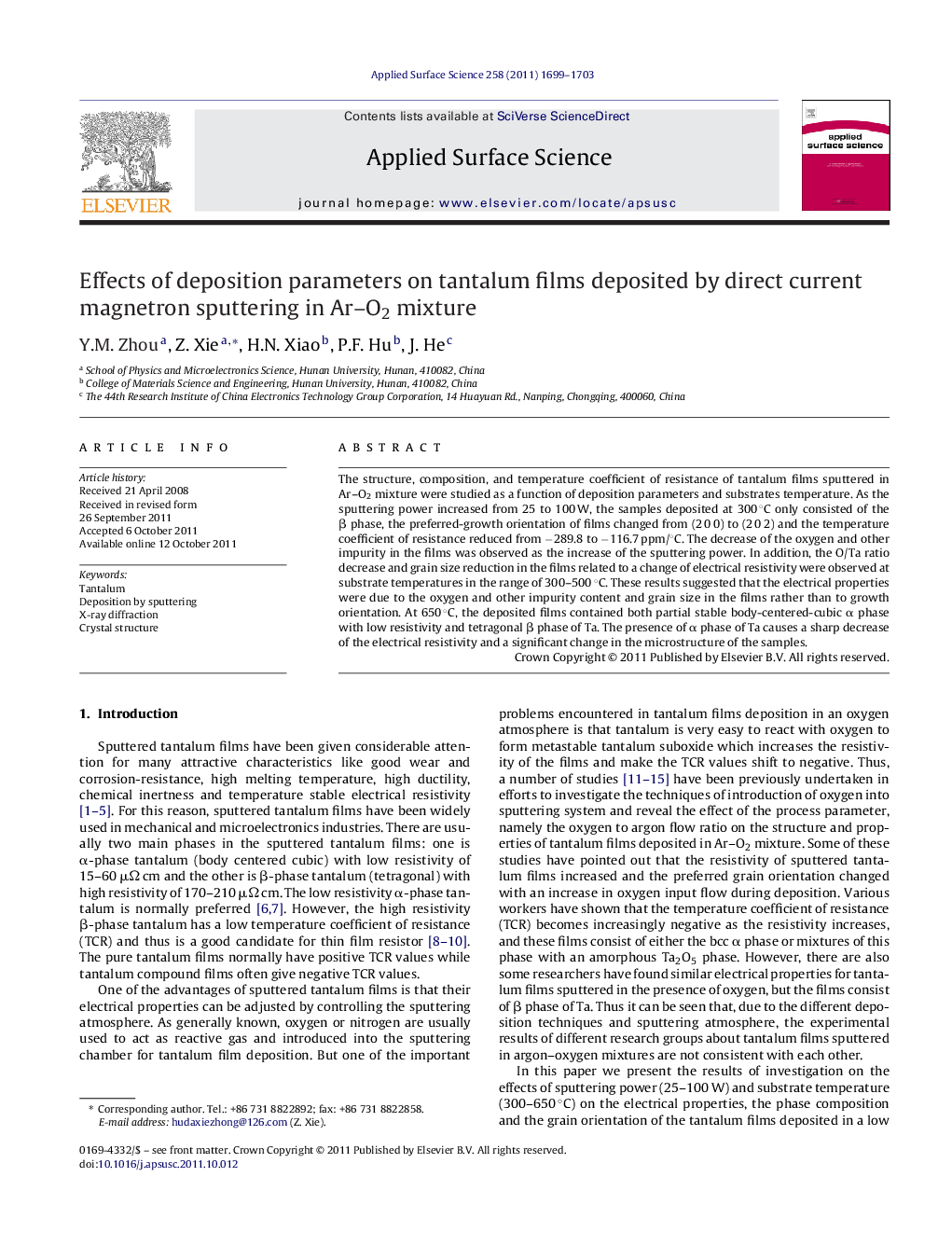| Article ID | Journal | Published Year | Pages | File Type |
|---|---|---|---|---|
| 5366783 | Applied Surface Science | 2011 | 5 Pages |
The structure, composition, and temperature coefficient of resistance of tantalum films sputtered in Ar-O2 mixture were studied as a function of deposition parameters and substrates temperature. As the sputtering power increased from 25 to 100 W, the samples deposited at 300 °C only consisted of the β phase, the preferred-growth orientation of films changed from (2 0 0) to (2 0 2) and the temperature coefficient of resistance reduced from â289.8 to â116.7 ppm/°C. The decrease of the oxygen and other impurity in the films was observed as the increase of the sputtering power. In addition, the O/Ta ratio decrease and grain size reduction in the films related to a change of electrical resistivity were observed at substrate temperatures in the range of 300-500 °C. These results suggested that the electrical properties were due to the oxygen and other impurity content and grain size in the films rather than to growth orientation. At 650 °C, the deposited films contained both partial stable body-centered-cubic α phase with low resistivity and tetragonal β phase of Ta. The presence of α phase of Ta causes a sharp decrease of the electrical resistivity and a significant change in the microstructure of the samples.
⺠This investigation indicated that the electrical properties and microstructure of the tantalum films sputter-deposited in argon-oxygen mixture were dependent on the sputter power and temperature in the range of 300-650 °C. The films deposited at substrate temperatures in range of 300-500 °C were composed of β phase of Ta, whereas the samples at 650 °C contained both α phase and β phase of Ta. ⺠This study indicated that the oxygen and other impurity in the films was decreased as the increase of sputter power and the O/Ta ratio decrease and grain size reduction were related to a change of electrical properties of the samples. ⺠This paper also present that the increase of the sputtering power gave rise to an increase of the temperature coefficient of resistance (TCR) of the deposited tantalum films and the major role on the electrical properties of these deposited samples was due to the oxygen and other impurity content and grain size in the films rather than to growth orientation.
